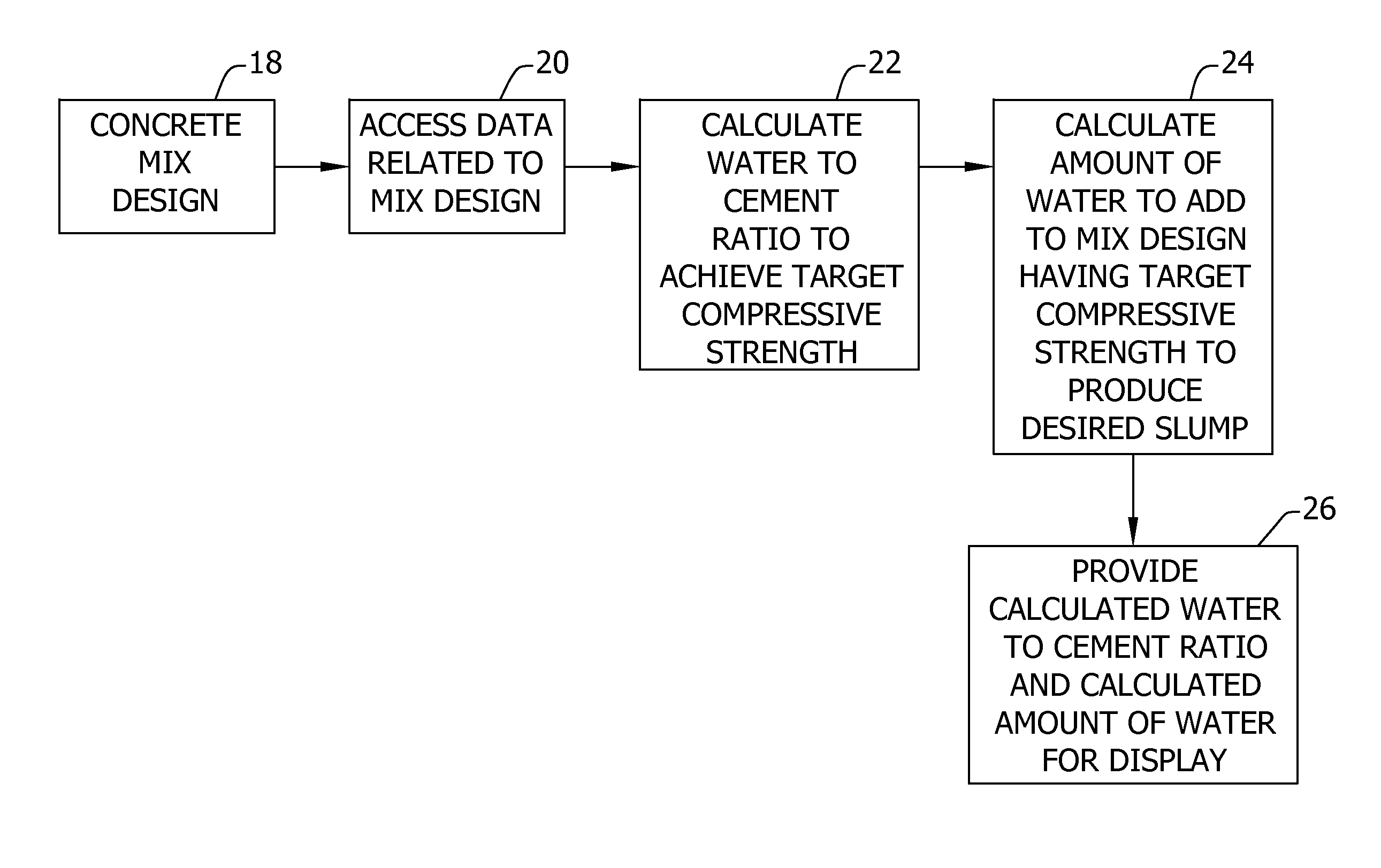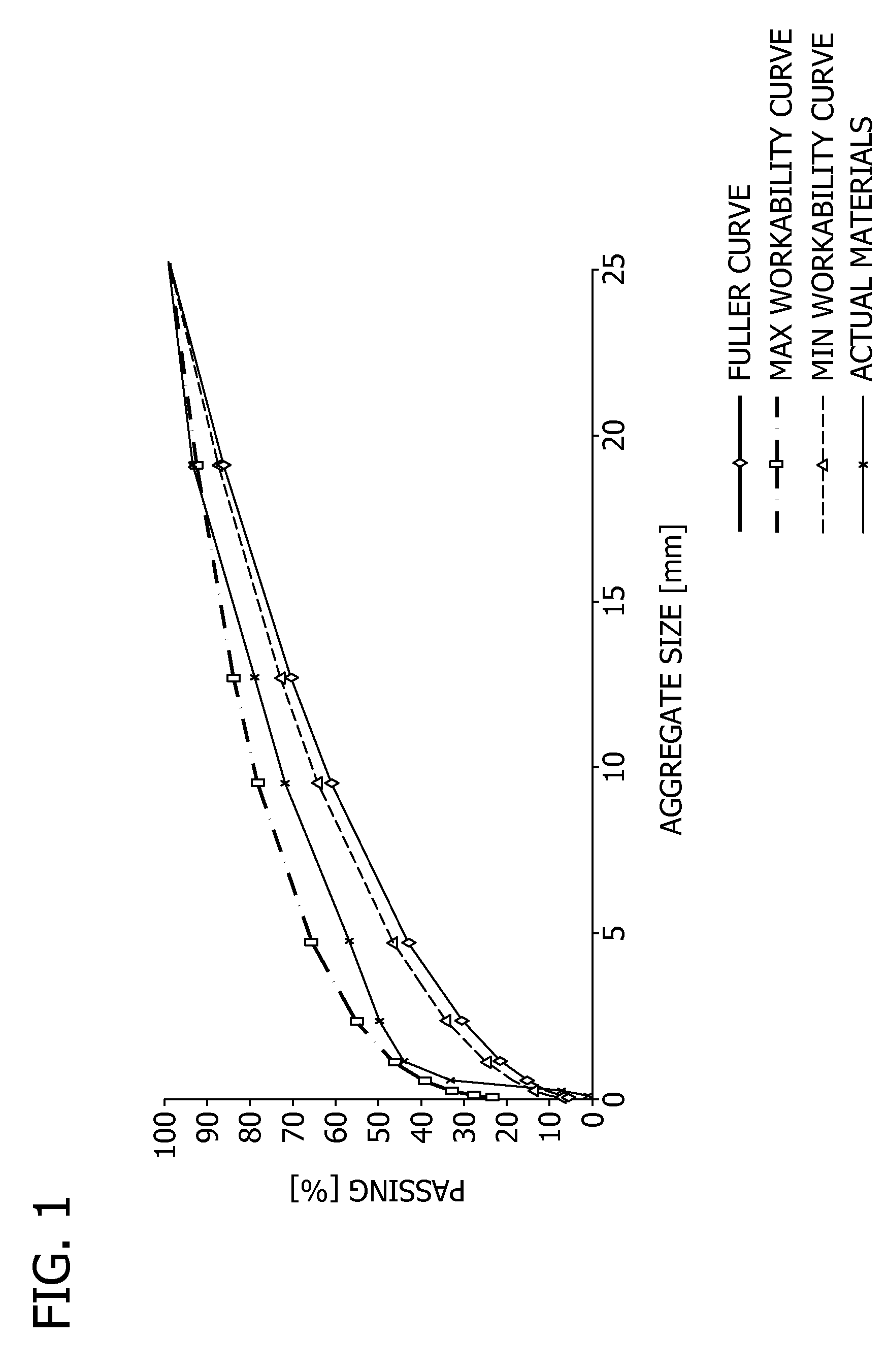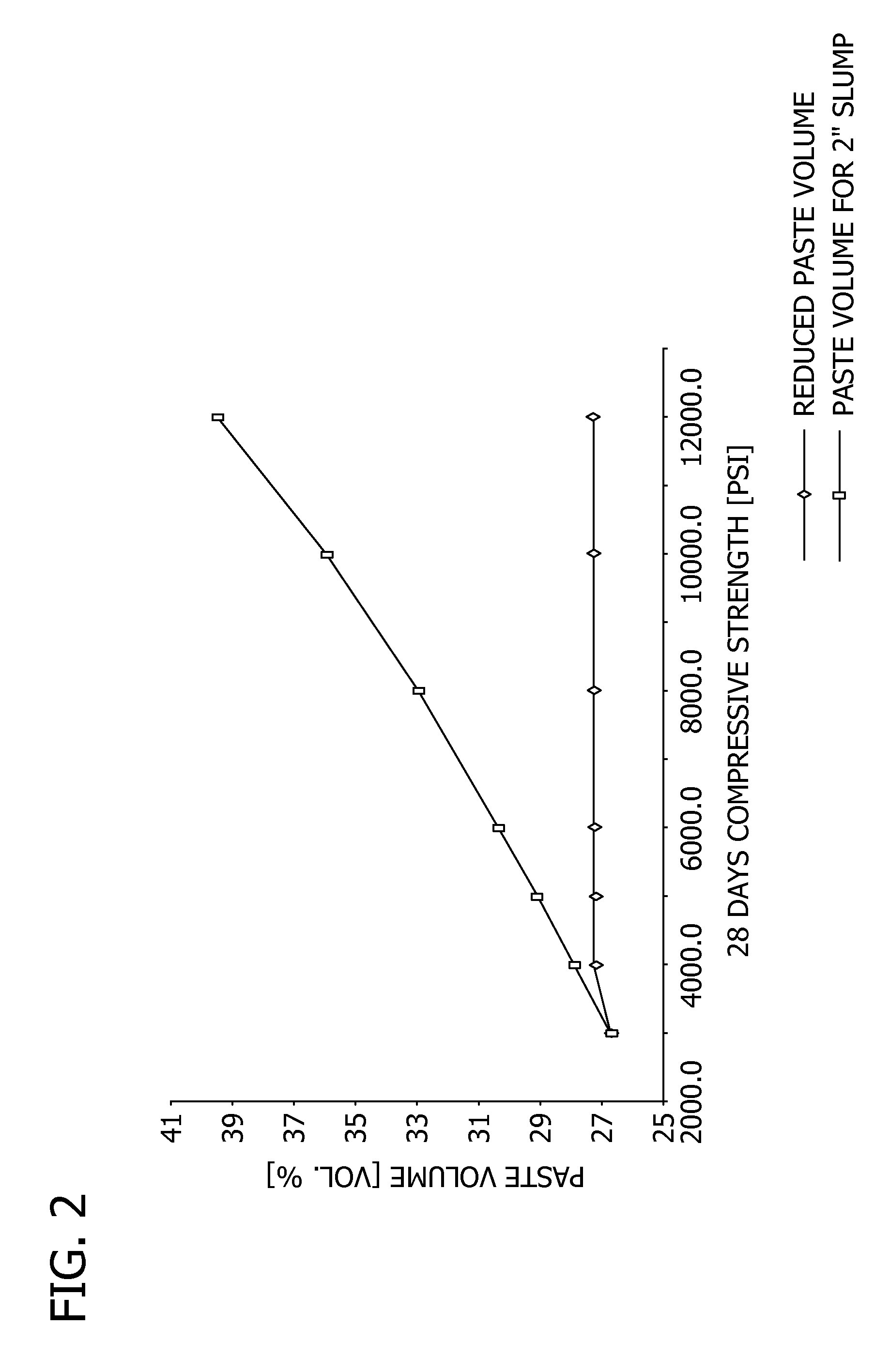Superior concrete mix design with workability optimized gradation and fixed paste volume
a technology of optimizing gradation and fixing paste volume, applied in non-electric variable control, electric digital data processing, instruments, etc., can solve the problems of fundamental disconnect between requirements, controls and limitations, and experts do not typically prepare concrete compositions at concrete plants for delivery to customers, etc., to optimize the ratio of aggregate to cement, reduce cement paste volume, and optimize workability
- Summary
- Abstract
- Description
- Claims
- Application Information
AI Technical Summary
Benefits of technology
Problems solved by technology
Method used
Image
Examples
example 1
[0118]In this Example, concrete design mixes were optimized to yield improved workability and target compressive strength and slump with a fixed cement paste volume. More particularly, pre-existing mix designs, having water to cement ratios for producing target compressive strengths and target slump amounts, were analyzed to determine the effects of cement paste reduction and substituting other pozzolanic materials for hydraulic cement.
[0119]To begin, various mixes pre-existing concrete mix designs, each having a target compressive strength ranging from 3000 to 12000 psi, were identified. Particularly, the revised water to hydraulic cement ratios were determined using fingerprint curves for the existing designs as described above.
[0120]Once prepared, the concrete compositions were analyzed to determine the minimal amount of water (i.e., water demand) for a 2-inch slump. Particularly, the water demand for a 2-inch slump was determined by adding water until a 2-inch slump was observed...
example 2
[0122]In this Example, concrete design mixes were optimized to yield improved workability and target compressive strength and slump with a fixed cement paste volume. More particularly, pre-existing mix designs, having water to cement ratios for producing target compressive strengths and target slump amounts, were analyzed as in Example 1 to determine the effects of cement paste reduction and substituting other pozzolanic materials for hydraulic cement.
[0123]The various mix designs and analyses of these designs are shown in Table 2.
TABLE 2Plant 2's Final Set-up Mix DesignsCement Mix Designs having Strengths from 3000 PSI to 12000 PSIMix 1Mix 2Mix 3Mix 4Mix 5Mix 6Mix 7(3000 psi)(4000 psi)(5000 psi)(6000 psi)(8000 psi)(10000 psi)(12000 psi)Paste0.02.46.410.217.324.130.9Reduction(%)Strength300040005000600080001000012000(PSI)Cement413460496530594656716(lbs / yd3)Sand 11774176217621762160216021602(0.1-4 mm)(lbs / yd3)½″ Rock116115115115128128128(lbs / yd3)1″ Rock1330132113211321146814681468(lbs...
example 3
[0124]In this Example, concrete design mixes were optimized to yield improved workability and target compressive strength and slump with a fixed cement paste volume. More particularly, pre-existing mix designs, having water to cement ratios for producing target compressive strengths and target slump amounts, were analyzed as in Example 1 to determine the effects of cement paste reduction and substituting other pozzolanic materials for hydraulic cement.
[0125]The various mix designs and analyses of these designs are shown in Table 3.
TABLE 3Plant 3's Final Set-up Mix DesignsCement Mix Designs having Strengths from 3000 PSI to 8000 PSIMix 1Mix 2Mix 3Mix 4Mix 5(3000 psi)(4000 psi)(5000 psi)(6000 psi)(8000 psi)Paste0.02.46.410.217.3Reduction(%)Strength30004000500060008000(PSI)Cement393438472504565(lbs / yd3)Sand 117061695169516951541(0.1-4 mm)(lbs / yd3)½″ Rock111111111111123(lbs / yd3)1″ Rock12791271127112711412(lbs / yd3)Water271265254243224(lbs / yd3)Approx. Air44444EntrainmentAgent(fl.oz / yd3)Ap...
PUM
| Property | Measurement | Unit |
|---|---|---|
| workability | aaaaa | aaaaa |
| compressive strength | aaaaa | aaaaa |
| specific gravity | aaaaa | aaaaa |
Abstract
Description
Claims
Application Information
 Login to View More
Login to View More - R&D
- Intellectual Property
- Life Sciences
- Materials
- Tech Scout
- Unparalleled Data Quality
- Higher Quality Content
- 60% Fewer Hallucinations
Browse by: Latest US Patents, China's latest patents, Technical Efficacy Thesaurus, Application Domain, Technology Topic, Popular Technical Reports.
© 2025 PatSnap. All rights reserved.Legal|Privacy policy|Modern Slavery Act Transparency Statement|Sitemap|About US| Contact US: help@patsnap.com



